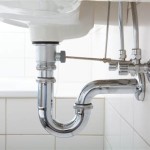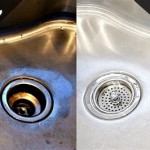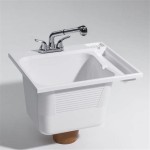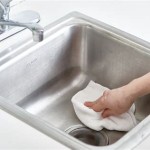How to Get Hair Out of a Sink Drain
Hair accumulating in a sink drain is a common household problem. Over time, strands of hair, often combined with soap scum, grease, and other debris, can form a clog that impedes water flow, leading to a slow-draining or completely blocked sink. Addressing this issue promptly is crucial to prevent further complications such as pipe damage and the potential for unsanitary conditions. There are several methods to effectively remove hair from a sink drain, ranging from simple manual techniques to the use of specialized tools and chemical solutions. This article will provide a comprehensive guide to these methods, outlining the steps involved in each and offering preventative measures to minimize future occurrences.
Manual Removal Techniques
Before resorting to more intrusive methods, attempting manual removal is often the first and simplest approach. This involves physically extracting the hair and debris from the drain opening. This technique is most effective when the clog is located near the surface of the drain and is readily accessible.
1. Using Pliers or Tweezers: This method is suitable for clogs visible within the drain opening. A pair of long-nosed pliers or tweezers can be used to carefully grasp and pull out the hair and debris. It's essential to have adequate lighting to identify the obstruction clearly. Shine a flashlight directly into the drain to improve visibility. Gently insert the pliers or tweezers into the drain, attempting to grab the visible mass of hair. Slowly and steadily pull the debris out, avoiding forceful yanking, which could potentially break the hair and make removal more difficult. Dispose of the extracted hair and debris immediately to prevent it from falling back into the drain.
2. The Wire Hanger Method: A straightened wire coat hanger can be a surprisingly effective tool for reaching clogs further down the drainpipe. Straighten the hanger as much as possible, leaving a small hook at the end. Carefully insert the hooked end of the hanger into the drain opening, guiding it down the pipe. Rotate the hanger as it descends, attempting to snag the hair and debris. Once resistance is felt, slowly pull the hanger back up, bringing the accumulated hair with it. Repeat this process multiple times, cleaning the hanger after each retrieval. Exercise caution when using this method to avoid damaging the drainpipe, particularly if it is made of PVC.
3. Drain Screens and Stoppers: Preventative measures are often the most effective solutions. Installing a drain screen or stopper over the drain opening can significantly reduce the amount of hair that enters the drainpipe in the first place. These devices act as physical barriers, trapping hair and other debris before they can accumulate. Periodically remove and clean the drain screen or stopper to remove the collected debris. This simple maintenance task can prevent the formation of larger, more stubborn clogs.
Using Specialized Tools
When manual removal proves insufficient, specialized drain cleaning tools can provide a more effective solution. These tools are designed to reach deeper into the drainpipe and break up or retrieve stubborn clogs.
1. The Plunger Method: A plunger is a common household tool that can be used to dislodge clogs by creating pressure within the drainpipe. Ensure there is enough water in the sink to cover the cup of the plunger. Place the plunger cup directly over the drain opening, creating a tight seal. Push and pull the plunger up and down vigorously for several minutes, maintaining the seal. Remove the plunger to see if the water drains freely. Repeat the process if necessary. It is important to use a flat-bottomed plunger for sinks, as opposed to a flange plunger designed for toilets. For double sinks, seal off the second drain opening with a wet cloth to maximize the pressure generated by the plunger.
2. The Drain Snake or Auger: A drain snake, also known as a plumbing snake or auger, is a flexible tool designed to reach deep into drainpipes and break up or retrieve clogs. Drain snakes come in various lengths and thicknesses, so choose one that is appropriate for the size of the sink drain. Insert the end of the drain snake into the drain opening and carefully feed it down the pipe. Rotate the snake as it descends, feeling for resistance. When resistance is encountered, it indicates the presence of a clog. Continue rotating the snake to break up the clog or to snag the hair and debris. Slowly pull the snake back out of the drain, cleaning it as it is retrieved. Repeat this process until the drain flows freely. When using a drain snake, avoid forcing it too aggressively, as this could damage the drainpipe.
3. Wet/Dry Vacuum: A wet/dry vacuum can sometimes be used to extract clogs from a sink drain. It is essential to ensure that the vacuum is designed for wet use and that it is properly cleaned afterwards. Remove any standing water from the sink. Place the vacuum hose directly over the drain opening, creating a tight seal. Turn on the vacuum and allow it to run for several minutes, attempting to suction the clog out of the drainpipe. Turn off the vacuum and check if the drain is clear. Repeat the process if necessary. Be cautious not to overfill the vacuum with water or debris.
Chemical Solutions
Chemical drain cleaners are a readily available option for dissolving hair clogs in sink drains. However, it is imperative to use these products with caution, as they can be corrosive and potentially harmful to both the environment and the plumbing system. Always follow the manufacturer's instructions carefully and wear appropriate safety gear, such as gloves and eye protection.
1. Commercial Drain Cleaners: Commercial drain cleaners typically contain strong chemicals, such as sodium hydroxide or sulfuric acid, that dissolve organic matter like hair and grease. Pour the drain cleaner into the drain opening according to the manufacturer's instructions. Allow the cleaner to sit for the recommended time, usually 15-30 minutes. Flush the drain with hot water for several minutes to remove the dissolved debris. If the drain remains clogged, repeat the process or consider using a different method. Be aware that repeated use of chemical drain cleaners can corrode and damage drainpipes, particularly older metal pipes. It is also vital to avoid mixing different types of drain cleaners, as this can create dangerous chemical reactions.
2. Baking Soda and Vinegar: A mixture of baking soda and vinegar is a natural and less corrosive alternative to commercial drain cleaners. Pour about one cup of baking soda down the drain, followed by one cup of white vinegar. Allow the mixture to fizz and bubble for about 30 minutes. Flush the drain with hot water for several minutes. The baking soda and vinegar react to create carbon dioxide, which can help to break up the clog. This method is generally more effective for minor clogs and preventative maintenance.
3. Boiling Water: Boiling water can be an effective way to dissolve grease and soap scum that often contributes to hair clogs. Boil a large pot of water and carefully pour it down the drain. The hot water can help to melt away the grease and soap scum, allowing the hair to flow more freely. This method is most effective for clogs that are not too far down the drainpipe. Avoid using boiling water on PVC pipes, as the high temperature could potentially damage them.
4. Enzyme Drain Cleaners: Enzyme drain cleaners contain enzymes that break down organic matter, including hair, grease, and soap scum. These cleaners are generally safer for pipes than chemical drain cleaners, and they are also more environmentally friendly. Pour the enzyme drain cleaner into the drain opening according to the manufacturer's instructions. Allow the cleaner to sit overnight. Flush the drain with warm water in the morning. Enzyme drain cleaners are typically more effective for preventative maintenance and slow-draining sinks than for completely blocked drains.
Regular maintenance and preventative measures are crucial to minimize the occurrence of hair clogs in sink drains. This includes using drain screens, regularly flushing the drain with hot water, and avoiding the disposal of grease and other debris down the drain. By implementing these strategies, homeowners can significantly reduce the likelihood of encountering this common plumbing problem.

How To Quickly Get Hair Out Of A Bathroom Sink

Top 5 Ways To Get Hair Out Of Your Drains

How To Get Hair Out Of Sink Drain All Coast Inspections

Top 5 Ways To Get Hair Out Of Your Drains

How To Clean Hair Out Of A Shower Drain 9 Easy Ways

How To Quickly Get Hair Out Of A Bathroom Sink Youtube

How To Prevent Hair Clogs In Shower Drains

How To Remove Hair From The Drain With A Hanger

How To Get Hair Dye Off Your Sink Tub Or Shower

How To Get Hair Out Of A Drain Plumbwize







